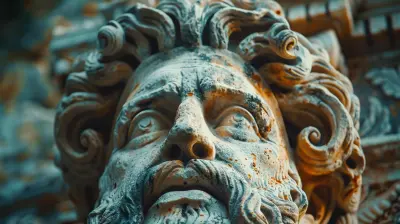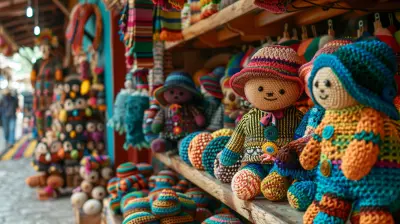The Artistic Splendor of Spain’s Sagrada Família
13 June 2025
Oh, the Sagrada Família. Just your average, run-of-the-mill, jaw-droppingly insane basilica smacked down in the heart of Barcelona, right? I mean, who doesn't wake up one day and decide to build a church that takes longer to complete than the invention of sliced bread and the internet combined?
Let’s be honest — the Sagrada Família isn’t just a building. It’s a full-blown soap opera of architecture, a color-splashed fever dream chiseled into stone, and quite possibly the only unfinished construction site in the world that’s also a UNESCO World Heritage Site. Grab your camera and your curiosity — we’re diving headfirst into this glorious maze of color, curves, and “Wait, that’s a church?”
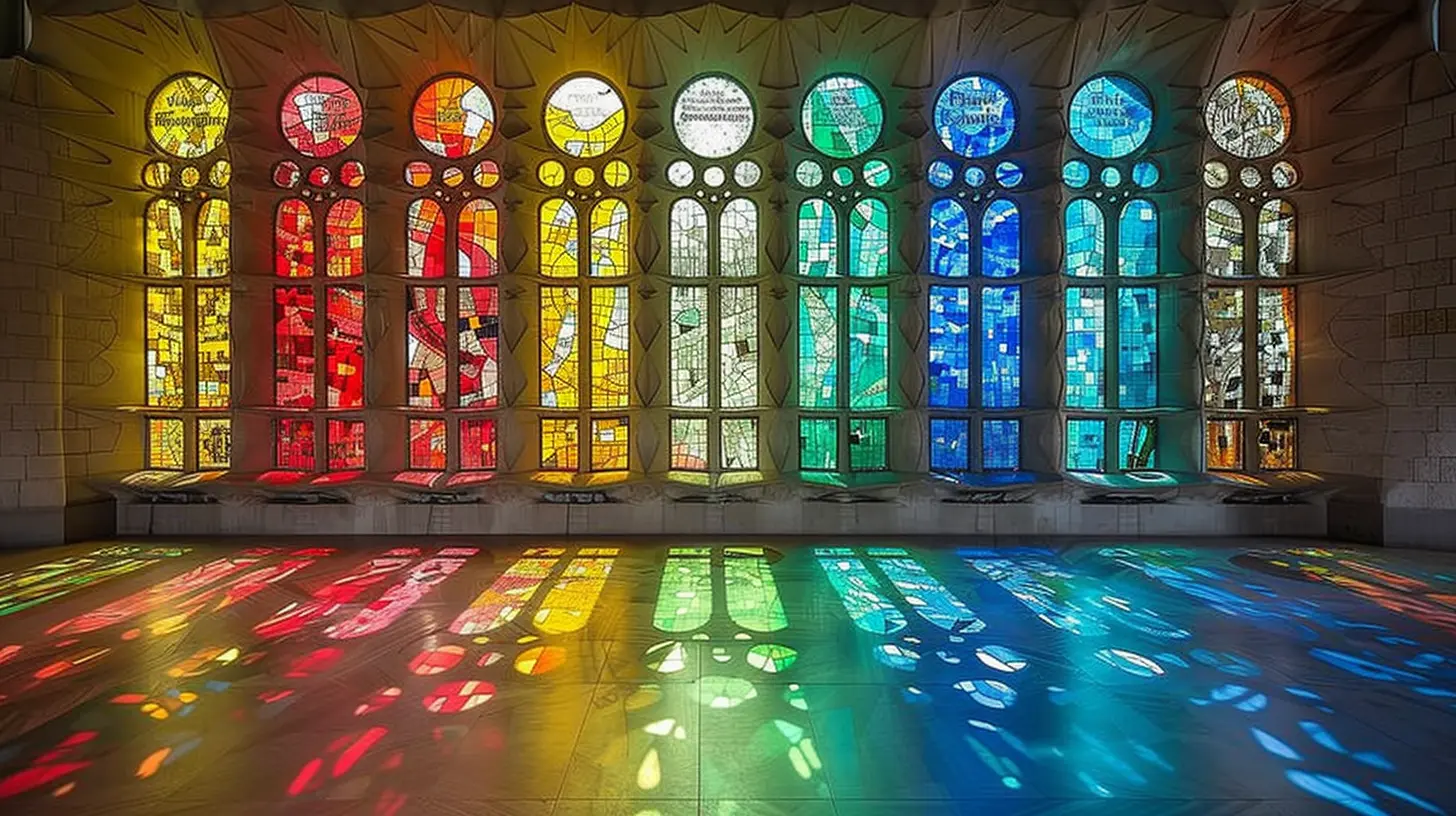
A Brief Introduction to the Mind Behind the Madness: Antoni Gaudí
So, who do we have to thank for this magical mayhem of spires, stained glass, and sci-fi-like sculptures? A guy named Antoni Gaudí. Picture this: an eccentric Catalan architect who looked at straight lines and said, “Nah, too boring.” Gaudí was a genius, a madman, and possibly some kind of artistic wizard. He loved nature, religious symbolism, and breaking every design rule in the book — and somehow, he made it all work.The Sagrada Família is Gaudí’s magnum opus. You know, that one passion project that he nurtured for 43 years before—well—getting hit by a tram. (Spoiler alert: the basilica still isn’t done, and no, it’s not a joke.)

A Construction Timeline That Laughs at Deadlines
Let’s talk about timing. Construction began in 1882. That’s right — 1882. To put this into perspective: Queen Victoria was still kicking, and Thomas Edison had just patented the electric lamp. Meanwhile, over in Barcelona, Gaudí was sketching out a basilica that would outlive several monarchs, two world wars, and the rise of TikTok influencers.The current expected completion date? Drumroll, please… maybe 2026, to celebrate the 100th anniversary of Gaudí’s death. But honestly, don’t hold your breath. This basilica has been under construction longer than most people live. If buildings had frequent flyer miles for years under scaffolding, the Sagrada Família would be flying first class to Mars.
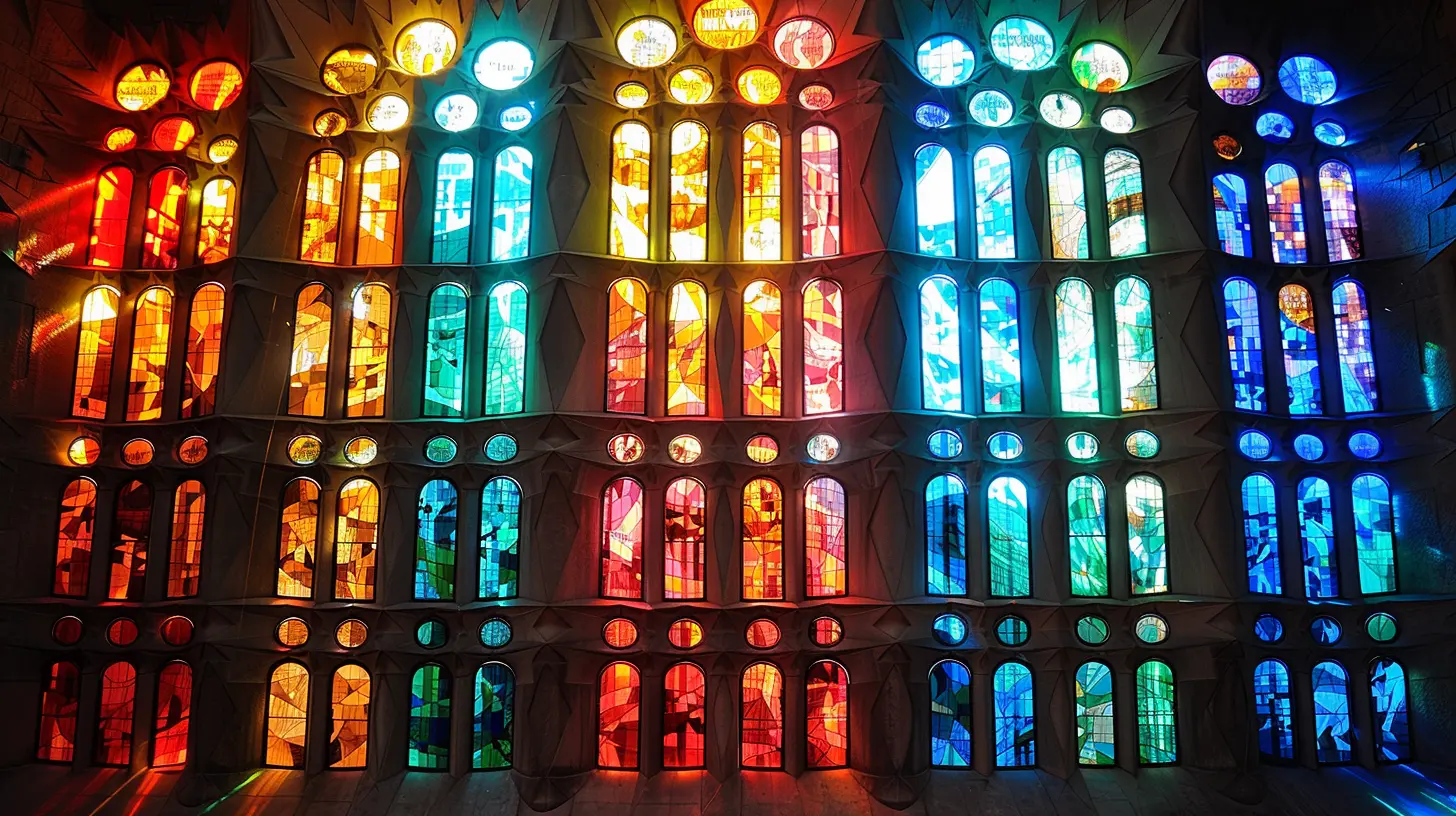
Style, Baby: Not Your Grandma’s Gothic Cathedral
Ah yes, the architecture. If you came here expecting Notre-Dame 2.0, you’re in for a wild ride. Gaudí took one look at Gothic architecture and said, “Sure, but let’s make it funky.”Organic Shapes That Look Like Dr. Seuss Designed Them
Everything in the Sagrada Família is inspired by nature. Pillars aren’t just pillars; they’re tree trunks branching up into the ceiling canopy. Staircases swirl like snail shells. The towers? Pineapples. Or corn cobs. Or something out of a dream Picasso had once.It’s like walking into a forest built by aliens with degrees in fine arts.
Stained Glass Windows on Steroids
You’ve seen stained glass windows. But have you seen them explode into a neon rainbow that bathes the entire interior in mood lighting? Morning light floods in blue and green, giving the place a cool, tranquil vibe. Afternoon sunshine turns it into a fiery blaze of orange and red. It’s less “church” and more “celestial nightclub.”Symbolism So Deep You Need a Religious Studies Degree
Every inch of the basilica is loaded with layers of deep, spiritual symbolism. The facades depict the life of Christ — from his joyful baby days to his not-so-joyful crucifixion. You'll find tortoises (symbolizing stability), doves, grapes, mathematical squares, celestial coordinates… honestly, you might need a decoder ring.And did we mention the architecture follows the golden ratio? Yeah, Gaudí wasn’t making stuff up — he was mathing his way through art.
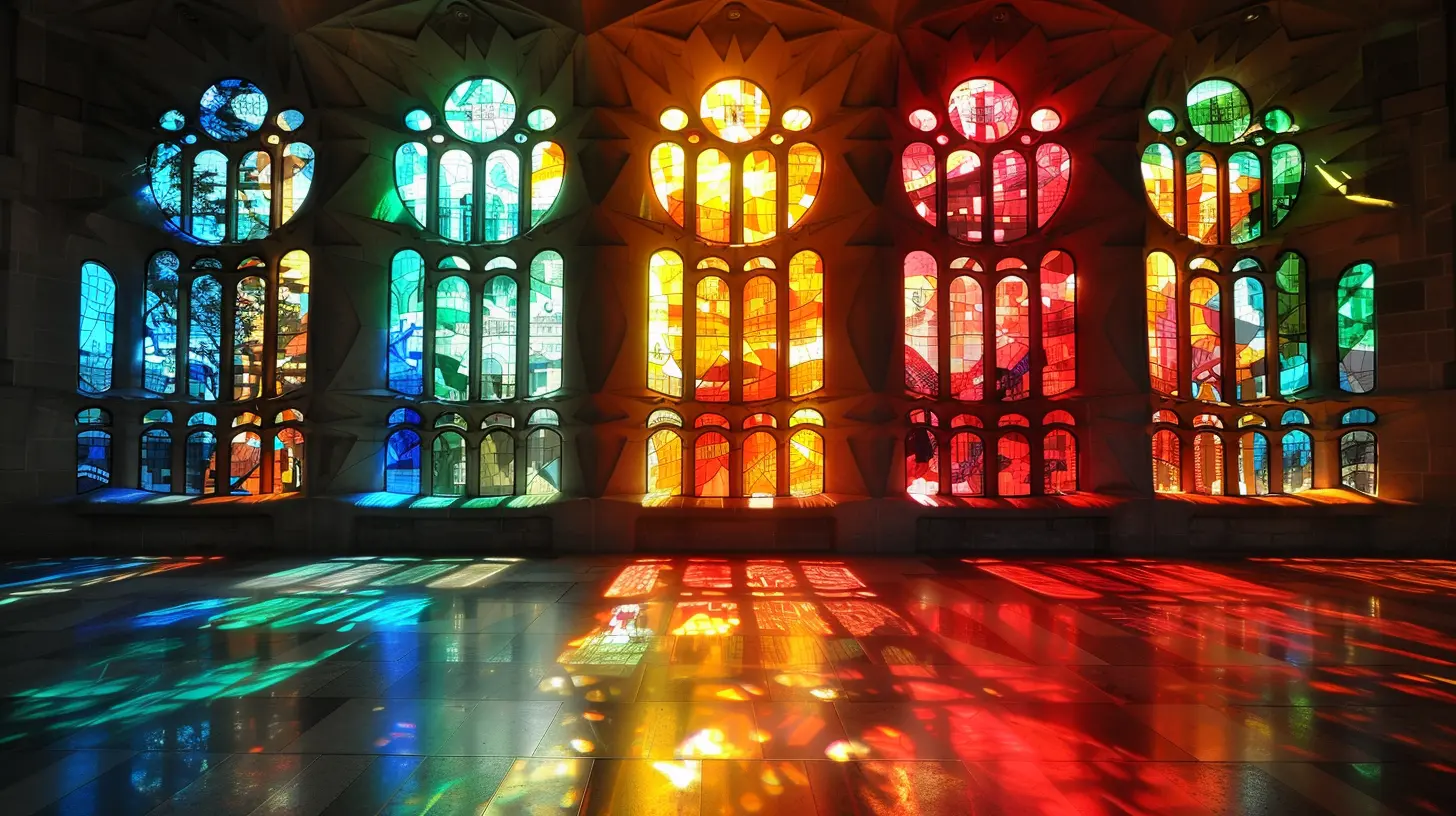
The Three Facades: One Building, Three Personalities
Why settle for one entrance when you can have three, each with a totally different vibe?The Nativity Façade: Overachiever in Stone
This one screams “Gaudí was here.” It’s all about joy and life and holy celebrations — the architectural equivalent of a Christmas carol sung by a 100-piece orchestra. It’s cluttered, it’s wild, and it’s wonderful. You’ll spot everything from angels to birds to turtles just chillin’ on the stonework.The Passion Façade: Stark and Dramatic (Very Metal)
Swing around to the other side, and boom — it’s like walking into a Tim Burton movie. Harsh lines, skeletal figures, empty-eyed statues. This side tells the story of Christ’s suffering and death. It’s haunting. Intense. A total 180 from the cheerful chaos of the Nativity façade.The Glory Façade: Still Under Construction (Surprise!)
This will be the main entrance… eventually. Right now it’s still a work-in-progress, like your cousin's five-year plan. But the goal? To represent heavenly glory in a way that probably involves at least three more cranes and a literal stairway to heaven.Interior Life: A Trip Into Gaudí's Brain
Let’s take a step inside. No, really. Step inside. It's like diving headfirst into a swirl of color, geometry, and divine energy. The ceiling looks like a forest canopy carved from alabaster. The lighting? So ethereal, you half expect angels to start breakdancing.And don’t even get me started on the acoustics. They designed this place to carry a whisper like it’s an opera solo. You cough — and it echoes like a Gregorian chant.
Things You Definitely Shouldn’t Miss
If you’re visiting (and oh boy, you should), here are a few can't-miss spots:The Towers: Views and Vertigo
Fancy a stair climb that makes your Fitbit weep? Pick a tower, any tower. You’ll be rewarded with panoramic views of Barcelona, the Mediterranean Sea, and probably your entire life flashing before your eyes after that narrow spiral staircase.The Museum: Nerd Out on Gaudí
Tucked underneath the basilica is a museum loaded with blueprints, models, videos, and facts. Did you know Gaudí used strings and weights to design arched structures upside-down? Yeah. The guy literally turned architecture on its head.The Crypt: Where Gaudí Rests (Still Waiting for That Deadline)
Deep below lies the resting place of the master himself. Pay your respects to the man who turned concrete into poetry and math into magic.Tips for Visiting (Because the Place Gets BUSY)
- Book in advance. No, really. This place gets more tourists than Barcelona FC on match day.- Go early or late. Light is everything here. Catch the sunrise glow or the sunset blaze.
- Don’t rush it. There’s so much to see — you’ll want to at least pretend to understand what’s going on.
- Dress respectfully. It’s a church, not Coachella.
- Bring a guide or audio tour. It helps decode the chaos.
Why the Sagrada Família Is So Much More Than a Church
Let’s set the record straight: the Sagrada Família isn’t just a church. It’s a statement. An experiment. A living, breathing piece of art that just so happens to occupy real estate in one of Europe’s coolest cities.It challenges everything you think you know about architecture, spirituality, and the limits of human creativity. It’s not trying to fit in — it’s trying to stand out, and it does so unapologetically.
More importantly, it continues to evolve even today. Gaudí knew he wouldn’t see it completed. He once shrugged and said, “My client is not in a hurry.” That client, by the way? God.
Final Thoughts: A Cathedral That Refuses to Be Boring
The Sagrada Família is like that weird, eccentric uncle at every family reunion — the one who wears capes, speaks in riddles, and somehow becomes everyone’s favorite. It’s weird. Wonderful. Overwhelming. It defies logic and embraces beauty in its quirkiest forms.Still not convinced it’s worth the hype? Go see it. Step inside. Let the light hit you, and I dare you not to get chills. This isn't just architecture — it’s passion in stone, color, and glass.
If art and faith had a love child raised on imagination and rebellion, it would be Spain’s Sagrada Família.
all images in this post were generated using AI tools
Category:
Must See LandmarksAuthor:

Winona Newman
Discussion
rate this article
3 comments
Zevonis McCollum
Sagrada Família: where every stone tells a story and every corner sparks creativity! A true masterpiece of wonder!
June 22, 2025 at 3:26 AM

Winona Newman
Thank you! The Sagrada Família truly embodies creativity and storytelling in every detail. I'm glad you appreciate its artistic splendor!
Hope Adkins
The Sagrada Família's intricate designs leave me eager to explore its rich history and artistry!
June 21, 2025 at 3:13 AM

Winona Newman
Thank you! The Sagrada Família truly is a testament to artistic genius and history—there's so much to discover within its stunning details!
Phoebe Middleton
The Sagrada Família is a masterpiece of architectural innovation, blending Gothic and Art Nouveau styles. Its intricate details and ongoing construction make it a must-visit symbol of Barcelona's artistic heritage.
June 14, 2025 at 2:49 AM

Winona Newman
Thank you for your insightful comment! The Sagrada Família truly exemplifies the fusion of styles and remains a testament to Barcelona's rich artistic legacy.
